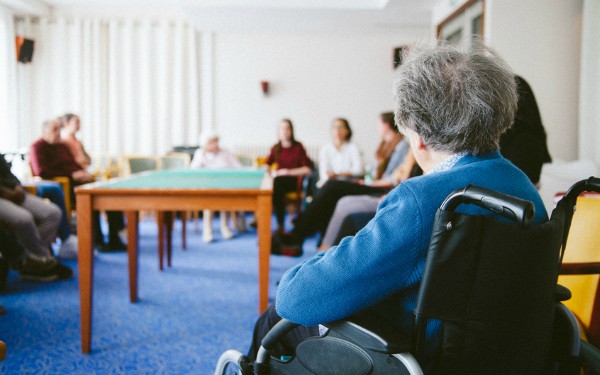
The number of people receiving long-term care has decreased for a third year running, despite increased council spending on services.
Figures from the Adult Social Care Activity and Finance Report published this week showed 857,770 people received long-term support from councils in 2017-18, meaning almost 11,000 fewer people received long-term support this year than during 2016-17.
There was a significant fall in the number of older people (aged 65 and above) receiving long-term support from councils. This year, 565,385 older people received long-term support, whereas 577,600 people in the same group had access to long-term care last year.
More significantly, the report showed that 22,000 fewer older people are now receiving long-term care than in 2015-16.
Despite a decrease in the number of older people receiving long-term support from councils, demand for access to this type of care from the same group grew. There were 132,690 requests for long-term council support from older people in comparison to 2016-17 when there were only 132,040 requests for long-term care.
Increasing requests
Overall, local authorities received 1,843,920 requests for adult social care services from all age groups in 2017-18, representing a small increase of 1.6% or 29,505 requests compared to the previous year. This equated to an average of 5,052 requests for support from new clients each day, up from 4,971 last year.
The North East region had the largest number of requests for adult social care services per client with 1.4 requests for support per person. Meanwhile, the East of England had the lowest number of requests per client at 1.1.
Requests from people aged 65 and over accounted for almost three quarters (71.6%) of all those received by councils. The figures showed that services were not provided in 27% (495,635) of cases after a request was made, a marginal fall from 28% last year.
The increasing costs of providing support to communities were also highlighted by the NHS Digital report. Councils’ total expenditure on adult social care in 2017-18 increased by £684 million from 2016-17, totalling £21.3 billion.
‘Much higher costs’
Meanwhile, gross expenditure on care services, which accounts for spending by social care departments and also includes client contributions, reached £17.9 billion. This was up by £402 million from the previous year, which meant a 2.3% increase in cash terms and a 0.4% increase in real terms.
The report put this increase down to a rise in those requiring support for complex needs, which led to “much higher costs of providing care”.
However, the rising cost of providing adult social care service was also reflected in the report, which showed the average cost of residential care for an elderly person per week at £604, rising from £565 in 2016-17.
President of the Association of Directors of Adult Social Services (ADASS), Glen Garrod, said: “An ageing population is something to be celebrated, however it’s essential that we are able to adapt our care system to support the more complex needs that have to be addressed as a result.
“At the moment, it is clear that the resources available for care services are being far outstripped by the demands on the system.
“The increasing demand to support working age adults is something that is overlooked often, but the stark truth is that requests for care and support have increased by five per cent in the last year alone. The time for a sustainable funding solution to this rising need is now.”
‘Scrabbling to get by’
Speaking to Community Care, senior fellow at The King’s Fund Simon Bottery said the report showed a social care system that was “scrabbling to get by” with little financial backing from the government.
“Overall, I think it paints a picture [which shows] councils are still struggling to meet increased demand from older people and working aged people on incomes which just aren’t sufficient to meet anywhere near all of the needs that they’re being presented with.
“Although spending has gone up… the more important figure is the number of people getting long-term support, which has gone down and, that’s particularly noticeable for older people. There’s over 20,000 fewer older people getting long-term support [since 2015-16].”
Bottery added the figures highlighted the short-term nature of funding provided by government to local authorities in order to “fill the gaps”. He said a different model would be needed going forward.
“It completely highlights the need for a proper long-term funding solution that takes account of that increase in demand from older people and working aged disabled people and puts in place a sustainable system that allows councils to better match services to demand.
“The upcoming green paper and next week’s budget are both essential opportunities to tackle these issues.”


 Assistive technology and dementia: practice tips
Assistive technology and dementia: practice tips  A trauma-informed approach to social work: practice tips
A trauma-informed approach to social work: practice tips 




 Find out how to develop your emotional resilience with our free downloadable guide
Find out how to develop your emotional resilience with our free downloadable guide  Develop your social work career with Community Care’s Careers and Training Guide
Develop your social work career with Community Care’s Careers and Training Guide  ‘Dear Sajid Javid: please end the inappropriate detention of autistic people and those with learning disabilities’
‘Dear Sajid Javid: please end the inappropriate detention of autistic people and those with learning disabilities’ Ofsted calls for power to scrutinise children’s home groups
Ofsted calls for power to scrutinise children’s home groups Seven in eight commissioners paying below ‘minimum rate for home care’
Seven in eight commissioners paying below ‘minimum rate for home care’
 Facebook
Facebook X
X LinkedIn
LinkedIn Instagram
Instagram
Comments are closed.